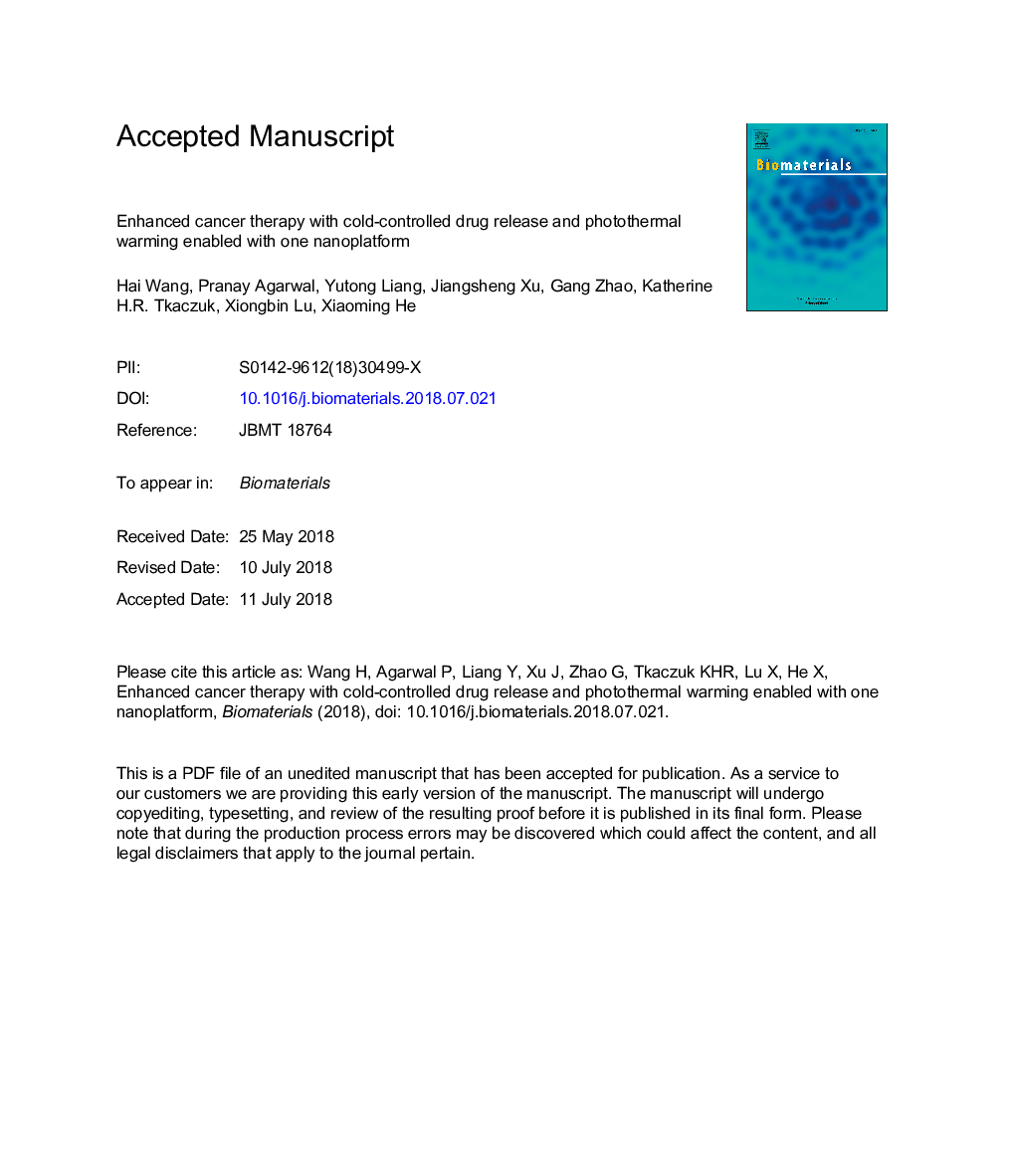| Article ID | Journal | Published Year | Pages | File Type |
|---|---|---|---|---|
| 6484335 | Biomaterials | 2018 | 45 Pages |
Abstract
Stimuli-responsive nanoparticles hold great promise for drug delivery to improve the safety and efficacy of cancer therapy. One of the most investigated stimuli-responsive strategies is to induce drug release by heating with laser, ultrasound, or electromagnetic field. More recently, cryosurgery (also called cryotherapy and cryoablation), destruction of diseased tissues by first cooling/freezing and then warming back, has been used to treat various diseases including cancer in the clinic. Here we developed a cold-responsive nanoparticle for controlled drug release as a result of the irreversible disassembly of the nanoparticle when cooled to below â¼10â¯Â°C. Furthermore, this nanoparticle can be used to generate localized heating under near infrared (NIR) laser irradiation, which can facilitate the warming process after cooling/freezing during cryosurgery. Indeed, the combination of this cold-responsive nanoparticle with ice cooling and NIR laser irradiation can greatly augment cancer destruction both in vitro and in vivo with no evident systemic toxicity.
Related Topics
Physical Sciences and Engineering
Chemical Engineering
Bioengineering
Authors
Hai Wang, Pranay Agarwal, Yutong Liang, Jiangsheng Xu, Gang Zhao, Katherine H.R. Tkaczuk, Xiongbin Lu, Xiaoming He,
